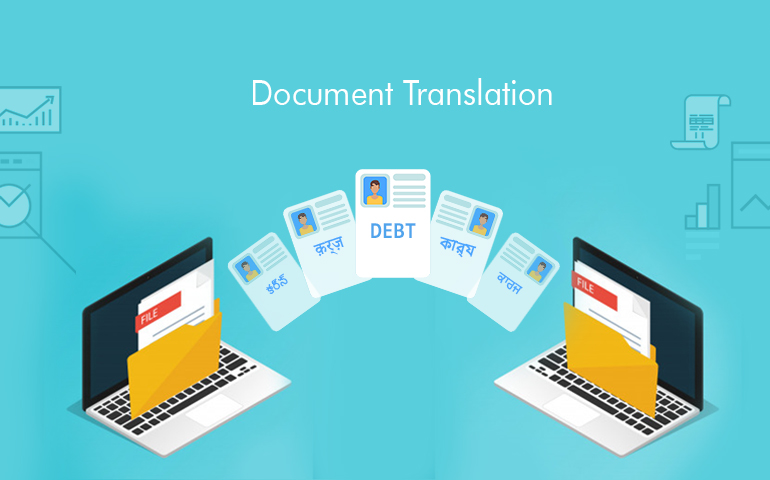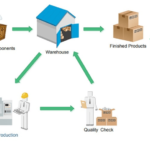Planning is the key to completing any project successfully and using document translation services is no exception. To help document translation fit in with your project management goals, we’ve pulled together some tips on working with a Chinese translation agency, tapping into translation sector expertise in order to do so. We’ll look at how to organize documents that need translation, work document translation into your schedule, understand how to select translation services and know how to communicate with those services efficiently.
How to Organize Your Document Translation Services
This might initially seem like the easiest part of the process. However, you’ll likely be surprised to learn just how much you’ll end up needing to submit to document translation services if you are expanding into a foreign market and planning to work with customers who speak other languages. Ofer Tirosh, CEO of translation agency Tomedes, points out that translating your website is just the start:
“From a marketing standpoint alone, you will need to translate any marketing materials like ads, brochures, content marketing, promotional social media posts, white papers or marketing emails. Going beyond marketing, document translation services can also handle any internal documents that help the business run in a multilingual setting. These might include instruction documents, product specs, financial reports, memos, emails, customs declarations or anything else that has to do with the process of liaising with customers, manufacturers and distributors.
It might help to get all copies of those documents organized in files or binders so you know what you are sending off to document translation services and in which order. Organizing them by tabs or files like “Marketing Materials- Content Marketing” or “Internal Communications- Memos” can also help more than you might imagine.
Work Translation into Your Project Management Schedule
Odds are, your translation goals are part of a larger project. You might be expanding into a new market overseas or completing a marketing plan for a certain region. Make sure to work translation into that project management schedule.
A few steps to keep in mind when making your schedule include:
- Schedule time for finding the services, including online research, interviewing various companies and comparing prices.
- Allow time to organize the documents you need translated.
- Factor in how long it will take the translation agency to complete the translations – you’ll learn this through interviewing the agency you plan to hire. It’s common to see one to five days of turnaround time, depending on the length and complexity of the document.
With more teams now working from home, including project management teams, it’s interesting to note that 88% of teams feel there are increased risks of misunderstanding when working remotely. Making sure to work translation into your project management schedule can reduce confusion and misunderstandings.
Factor Niche Experience into Your Project Management
Another important point is to keep specialities in mind. Translation agencies often provide niche expertise, as well as language skills. Some common document translation services specialities include:
- Business translation: This includes anything that has to do with the operations of a business. It handles a vast range of documents, such as financial statements, memos and presentations.
- Marketing translation: This type of translation handles marketing documents such as content marketing blog posts or ad copy. It’s often also listed under the category of business translation with many agencies. You might also see social media translation listed under marketing translation; that handles a wide variety of social media post types, from purely text-based to infographics.
- Legal translation: As the name suggests, this handles anything that has to do with legal proceedings. From a business standpoint, it most often handles contracts and documents related to lawsuits.
- Medical translation: If you run a medical company, this type of speciality handles patient instructions, patient files, drug information documents and anything else that has to do with medical information.
- Technical translation: This has to do with technical instructions, product specs, patent information or anything else related to scientific, engineering, IT and other technical texts.
You might also need to look into certified translation. This is when a translator provides a document with the translation stating that they were qualified to do the translation and that the document is accurate and complete. Certified translation is often required by immigration agencies, international trade regulatory agencies or simply as a good peace of mind service to use with very important contracts.
Vet Your Document Translation Services Fully
Make sure to check the background of your document translation services fully. A few items to note include:
- The website should look up-to-date and professional.
- Make sure the individual translator is qualified to perform the work. They should have a foreign language qualification, extensive work experience and/or professional certification.
- The translation agency should also have demonstrable experience translating similar types of documents. Ask to see past examples of work, such as a portfolio and client testimonials.
Communicating Efficiently During Every Stage of the Project Management Process
Make sure that your point of contact can communicate well as you look for a translation agency. They should be professional in their communication style and knowledgeable in answering questions. You should also gauge how open to input from you they are during the process, to get an idea of how the working dynamic will pan out.
Often, translation is not a simple process of only submitting the document. While certified translation means the document must remain the same from language to language, when you translate marketing materials or other creative documents, you may need to localize and adjust the copy. Working with a contact that you gel with can make a big difference.








